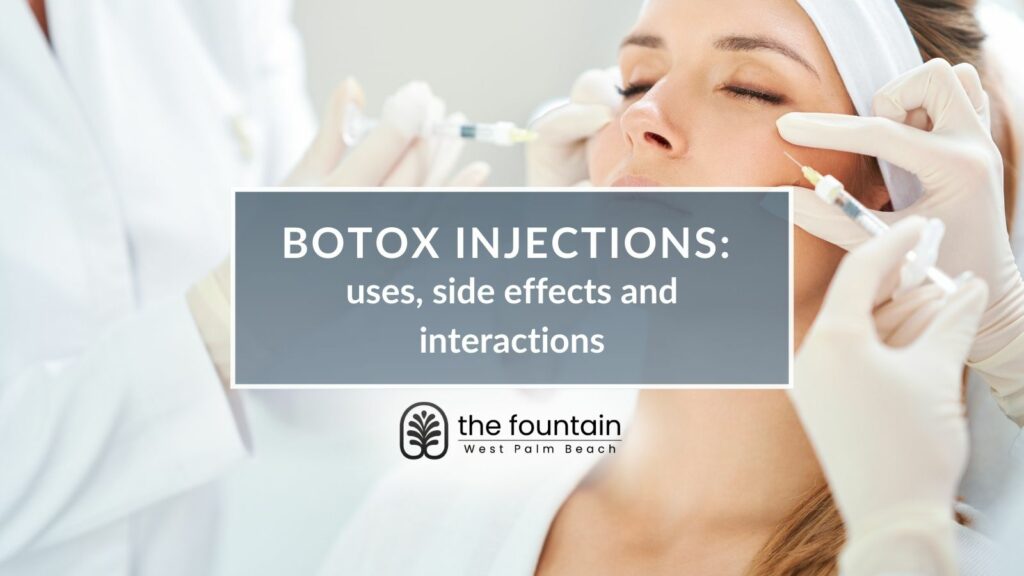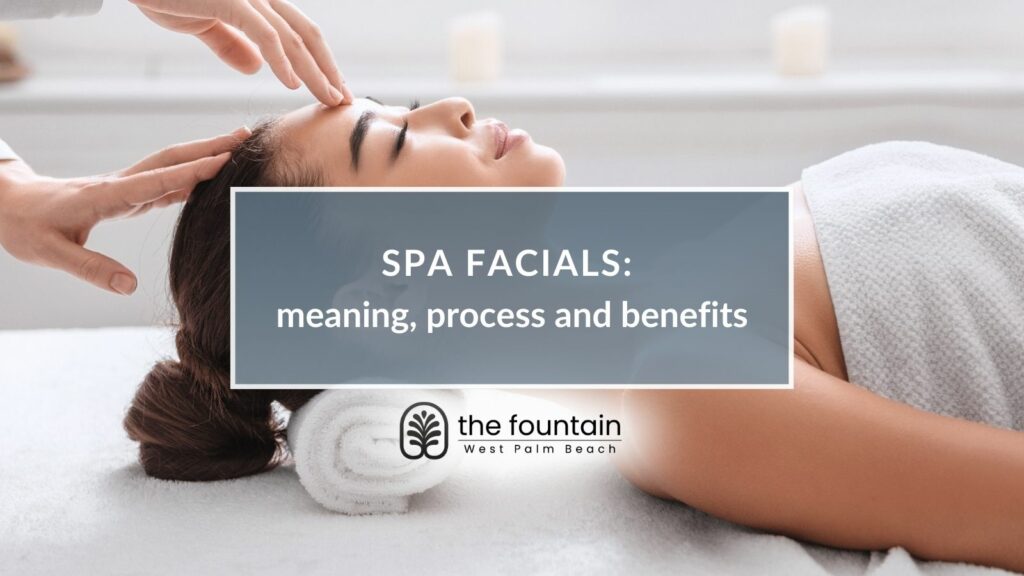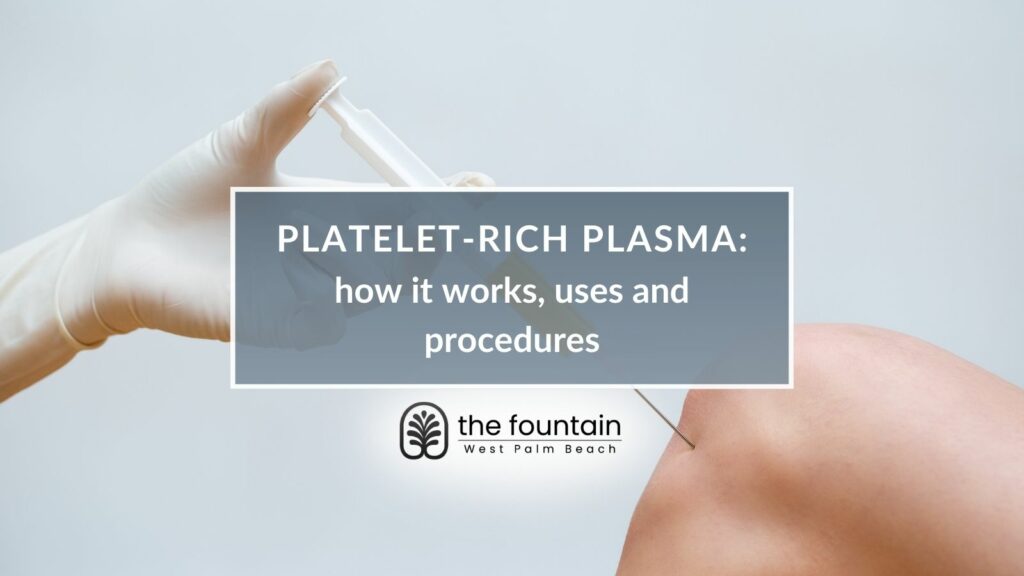Botox injections have become a prevalent medical and cosmetic procedure that addresses various concerns, ranging from medical conditions to the desire for youthful skin. These injections strategically deliver a neurotoxin into specific muscles or tissues to achieve desired outcomes.
Cosmetically, Botox is commonly used to diminish the appearance of facial wrinkles, contour facial features, enhance lips, define jawlines, and treat excessive sweating. Medically, Botox is FDA-approved for various conditions, including chronic migraines, muscle spasticity, cervical dystonia, eye disorders, and overactive bladder.
Botox injections have some side effects despite their widespread use and effectiveness. Common side effects include temporary injection site reactions, muscle weakness, flu-like symptoms, headaches, dry eyes, and sore throat. In rare cases, serious side effects such as allergic reactions, spread of toxin effects, and corneal ulceration may occur.
Botox injections interact with certain medications, substances, and medical conditions. It’s crucial to inform healthcare providers about any medicines being taken, particularly muscle relaxants, blood thinners, and antibiotics. Additionally, individuals with neuromuscular disorders or compromised immune systems should exercise caution.
What are Botox Injections?
Botox injections, also known as onabotulinumtoxina injections, are a widely used medical and cosmetic procedure aimed at addressing various concerns, from treating medical conditions to reducing the appearance of wrinkles, as discussed by Witmanowski, H. et al. 2020, “The whole truth about botulinum toxin—a review.” Administered by experienced healthcare professionals, Botox injections involve the targeted delivery of the neurotoxin into specific muscles or tissues to achieve desired outcomes.
What are Botox Injections Used for?
Botox injections serve dual purposes in the medical and cosmetic fields.
Cosmetic Uses
- Wrinkle Reduction: According to Satriyasa, B. K et al. 2019, “Botulinum toxin (Botox) A for reducing the appearance of facial wrinkles: a literature review of clinical use and pharmacological aspect,” Botox injections are commonly used to diminish the appearance of facial wrinkles, including forehead lines, crow’s feet around the eyes, and frown lines between the eyebrows.
- Facial Contouring: Botox sculpts facial features by relaxing specific muscles, providing subtle enhancements, and achieving a more youthful appearance.
- Lip Enhancement: By strategically injecting Botox into the lips, it achieves a fuller and more defined lip contour, enhancing overall facial aesthetics.
- Jawline Definition: Botox injections often help reduce jawline muscles’ prominence, creating a slimmer and more contoured jaw appearance.
- Excessive Sweating: Botox is effective in treating hyperhidrosis, a condition characterized by excessive sweating, particularly in the underarms, palms, and soles of the feet.
Medical Uses
- Chronic Migraine Treatment: According to Shaterian, N. et al. 2022, “Botox (OnabotulinumtoxinA) for Treatment of Migraine Symptoms: A Systematic Review,” Botox injections are FDA-approved for preventing chronic migraines in adults who experience 15 or more headache days per month, lasting for 4 hours or more.
- Muscle Spasticity: Botox treats muscle stiffness or spasticity in various body parts, including the arms, hands, legs, and feet, resulting from conditions such as cerebral palsy, stroke, or multiple sclerosis.
- Cervical Dystonia: Botox injections are beneficial in alleviating the symptoms of cervical dystonia, a neurological disorder characterized by abnormal neck muscle contractions and involuntary head movements.
- Eye Conditions: Botox treats eye muscle disorders such as blepharospasm (uncontrollable blinking) and strabismus (misalignment of the eyes), relieving involuntary eye movements.
- Overactive Bladder: Botox injections are used to manage symptoms of an overactive bladder, including urinary urgency, frequency, and incontinence, when other medications have been ineffective or poorly tolerated.
What are the Side Effects of Botox Injections?
While Botox injections are generally safe and well-tolerated when administered by experienced healthcare professionals, like any medical treatment, they can potentially cause side effects. According to Sethi, N. et al. 2020, “A Review of Complications Due to the Use of Botulinum Toxin A for Cosmetic Indications,” various injection-related adverse effects (AE) with botulinum toxins include erythema, edema, pain, ptosis of eyelid or brow, and ecchymosis.
Common Side Effects
- Injection Site Reactions: Mild pain, swelling, redness, or bruising at the injection site are common and usually resolve within a few days.
- Muscle Weakness: Temporary weakness or fatigue in the treated muscles may occur, particularly in areas where Botox is injected for cosmetic purposes.
- Flu-like Symptoms: Some individuals experience flu-like symptoms such as headache, fever, nausea, or achy muscles shortly after receiving Botox injections, which typically subside quickly.
Mild Side Effects
- Headache: Headaches are a common side effect, especially in individuals receiving Botox for chronic migraine prevention. These headaches are usually mild and transient.
- Dry Eyes: Temporary dryness or irritation of the eyes occurs, particularly in individuals receiving Botox injections for eyelid or eye muscle conditions.
- Sore Throat: Some people experience a sore throat following Botox injections, which typically resolves without intervention.
Serious Side Effects
- Allergic Reactions: While rare, allergic reactions to Botox occur, presenting as skin rash, itching, swelling of the face, or difficulty breathing. These require immediate medical attention.
- Spread of Toxin Effects: In rare cases, the toxin in Botox spreads beyond the injection site, causing symptoms such as muscle weakness, difficulty swallowing or breathing, or urinary retention. These are serious side effects and require prompt medical evaluation.
- Corneal Ulceration: Individuals receiving Botox injections for certain eye conditions also risk developing an open sore on the eye’s surface. If symptoms such as eye pain, redness, or vision changes occur, prompt medical attention is necessary.
What Precautions Are Needed While Using Botox Injections?
Before undergoing Botox injections, it’s crucial to consider certain precautions to ensure safe and effective treatment outcomes. Here are some essential precautions to keep in mind:
1. Allergy Assessment
Before receiving Botox injections, inform your healthcare provider about any known allergies, especially if you have a history of allergic reactions to botulinum toxin products or any of their ingredients.
2. Medical History Review
Provide your healthcare provider with a comprehensive medical history, including any past surgeries, medical conditions, or medications you currently take. Certain medical conditions, such as bleeding disorders, neurological disorders, or muscle disorders, often affect your suitability for Botox treatment or require special consideration.
3. Pregnancy and Breastfeeding
If you are pregnant, planning to become pregnant, or breastfeeding, discuss the potential risks and benefits of Botox treatment with your healthcare provider.
4. Provider Qualifications
Ensure that Botox injections are administered by a qualified and experienced healthcare professional, such as a licensed physician or nurse practitioner, who has received specialized training in cosmetic or therapeutic injection techniques.
5. Follow-Up Care
After receiving Botox injections, adhere to any post-treatment instructions provided by your healthcare provider. This includes avoiding strenuous exercise, excessive sun exposure, or certain medications that could interact with Botox.
How do Botox Injections Interact?
Botox injections, while generally safe and effective when administered properly, can interact with certain medications, substances, or medical conditions. Here’s a detailed overview of how Botox injections can interact:
1. Medication Interactions
Botox injections interact with certain medications, including muscle relaxants, cold or allergy medicines, sleep aids, and antibiotics. These interactions can potentiate the effects of Botox or increase the risk of side effects.
2. Blood Thinners
Anticoagulant medications, such as warfarin or aspirin, can increase the risk of bleeding or bruising at the injection site following Botox treatment. Your healthcare provider may recommend temporarily discontinuing these medications or adjusting their dosage before undergoing Botox injections to reduce the risk of complications.
3. Neuromuscular Disorders
Individuals with pre-existing neuromuscular disorders, such as myasthenia gravis or Lambert-Eaton syndrome, are more susceptible to the effects of Botox injections. Interactions between Botox and underlying neuromuscular conditions worsen muscle weakness or lead to respiratory compromise.
4. Infection Risk
Botox injections pose a slight risk of infection, particularly if proper sterile techniques are not followed during administration. Individuals with a history of infections or compromised immune systems are at increased risk of developing infections following Botox treatment. Your healthcare provider will take appropriate precautions to minimize the risk of infection, such as using sterile needles and disinfecting the injection site.
5. Cosmetic Procedures
Concurrent cosmetic procedures, such as dermal fillers or laser treatments, often interact with Botox injections and affect treatment outcomes. It’s essential to discuss any planned or recent cosmetic procedures with your healthcare provider before undergoing Botox treatment to ensure compatibility and optimize results.
6. Medical Conditions
Certain medical conditions, such as diabetes, heart disease, or respiratory disorders, may influence the safety and efficacy of Botox injections. Individuals with underlying health conditions should undergo a thorough medical evaluation before receiving Botox treatment.
7. Individual Factors
Age, weight, metabolism, and overall health influence how your body responds to Botox injections. Your healthcare provider will consider these individual factors when determining the appropriate dosage, injection sites, and treatment schedule to achieve optimal results while minimizing the risk of complications.
Can Botox injections be used to treat chronic pain conditions?
Botox has shown promise in managing chronic pain conditions such as neuropathic pain and musculoskeletal pain. However, its effectiveness for chronic pain may vary among individuals, and further research is needed to determine its role in pain management.
Are there any long-term side effects associated with frequent Botox injections?
Frequent or long-term use of Botox injections often leads to the development of antibodies against the toxin, potentially reducing its effectiveness over time. Additionally, ongoing research is being conducted to assess the long-term effects of repeated Botox injections on muscle function, skin elasticity, and overall health.
Can Botox injections be used to treat conditions like depression or anxiety?
Botox injections can be used in the treatment of depression and anxiety by inhibiting facial muscles associated with negative emotions. However, further research is needed to fully understand the efficacy and safety of Botox for mental health conditions.
What are the benefits of combining Botox with dermal fillers?
Combining Botox with dermal fillers can enhance overall facial rejuvenation by addressing both dynamic wrinkles with Botox and static wrinkles or volume loss with fillers. This combination can provide a more comprehensive anti-aging effect, creating a balanced and natural-looking result.
How does Botox compare to laser skin resurfacing for treating wrinkles?
While Botox treats wrinkles by relaxing facial muscles, laser skin resurfacing uses concentrated light beams to remove damaged skin layers, promoting new skin growth that is smoother and firmer. Both treatments have their specific uses, benefits, and side effects, and can sometimes be used in conjunction to achieve comprehensive results.
Is there a minimum age requirement for receiving Botox injections?
The FDA has approved Botox for specific medical and cosmetic uses in adults aged 18 and older. However, in certain cases, Botox may be used off-label in younger individuals for the treatment of medical conditions under the guidance of a qualified healthcare provider.
Can Botox injections cause permanent changes in facial appearance?
Botox injections don’t cause permanent changes in facial appearance. Botox injections are designed to provide temporary muscle relaxation and reduce the appearance of wrinkles or treat certain medical conditions.





